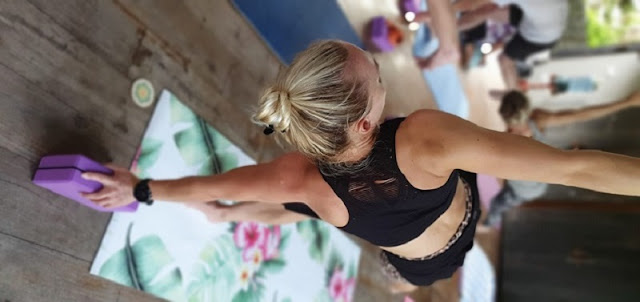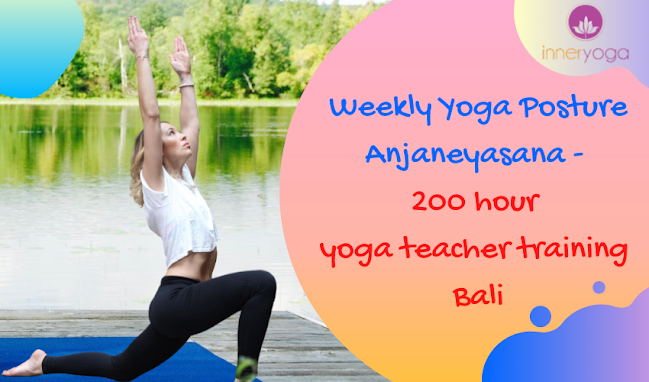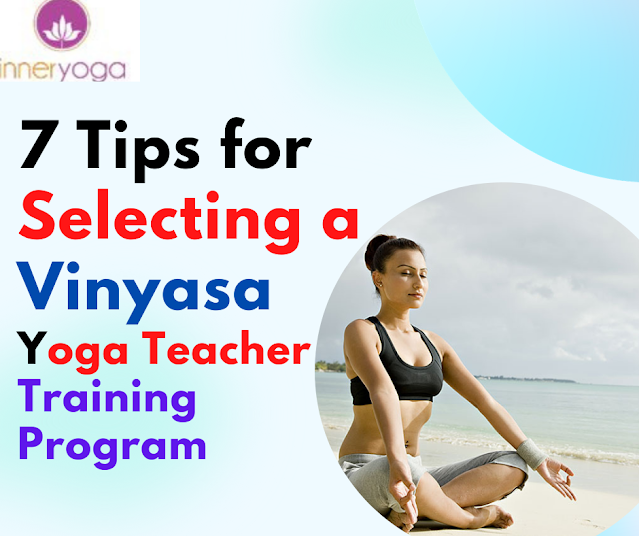Vinyasa vs Hatha Yoga Teacher Training: Which is best for you?
What is Vinyasa Yoga?
Vinyasa Yoga has a focus on movement with each movement linked to the breath, which is given primacy,
acting as an anchor as you move seamlessly from one pose to the next.
During the practice, the breath initiates your movement and acts as a pointer to
show you how connected and cantered you are as you aim to achieve a balance
of Sthira (Steadiness) and
Sukha (Comfort).
The term Vinyasa Yoga is derived from the Sanskrit word Nyasa, meaning “to place,” and vi, meaning “in a special way.” As this translation suggests we are not looking to throw our bodies from one posture to the next but are bringing consciousness to every movement throughout the entire practice and the breath helps us to achieve this. If you find yourself holding your breath, you may be pushing yourself too hard or not moving in flow with your own rhythm.
There is no set sequence in a Vinyasa Yoga Training class although Sun Salutations are a common element. Teachers are free to be creative with their sequences and change them according to a theme, target area of the body, or an energetic intention. This helps in developing a balanced body and acts as a prevention against injuries caused by repetitive movements that you may find in other yoga styles. As long as there is a continuous flow and the movements are linked with breath then there are no constraints for how creative you can be in developing your classes. This is why during a Vinyasa yoga teacher training it’s important to learn different and creative ways that you can sequence and theme your Vinyasa Yoga classes.
Characteristics of Vinyasa Yoga Teacher Training
- Vinyasa Yoga
connects one posture to the next using the breath. This is why it’s sometimes called Flow Yoga as there is a link or flow in the postures.
- “Transitions”
are a key part of what connects one posture to another in Vinyasa.
They are the in-between part but can be considered postures in themselves as practitioners looking to move in a more graceful, connected way between each posture and not break the flow.
- Vinyasa is
synonymous with movement. Moving in and out of postures is the obvious element but even in-floor postures, Vinyasa is maintained with the inhale and exhale of your breath.
- Move with
breath. Breath initiates the movement of Vinyasa, the movement doesn’t initiate the breath. Ujjayi
Breath is the breathing technique used and is achieved by inhaling and exhaling rhythmically through the nose. It can become a moving meditation in itself.
- Vinyasa
practice generates heat and can add a cardiovascular component that may not always feature in other styles of yoga.
- Often thought
of as a high-intensity style of yoga, you can also enjoy a slow style flow class as long as the key elements remain - linking breath and movement.
- Vinyasa Yoga is a more complete type of practice as it typically moves through all of the various categories of postures in a single class including standing postures, backbends, and forward folds to name a few.
What is Hatha Yoga?
Hatha yoga is actually an umbrella term for all styles of yoga that focus on a physical yoga practice (learn more in our upcoming Blog - The 8 Limbs of Yoga). However, as a specific practice, Hatha yoga is best for you generally considered a slower form of yoga in which postures are held for a longer period of time. There is no flow or transition between postures like there is in Vinyasa Yoga. Rather you come into a posture, come out of it then go to the next one. Hatha yoga always focuses on regular exercise, a balanced diet, practice on internal purification of the body, mastery over breathing techniques, and routine asanas. The three cores of hatha yoga are based on postures (asanas), breathing techniques & control (pranayama), and meditation (Dyan). The aim is to provide you with a healthy body, sound mind, and a peaceful soul. In both Hatha-style and Vinyasa classes, however, you'll often find yourself in the same poses such as Warrior I and II, Downward-Facing Dog, Bridge, and Triangle.
Benefits of Hatha Yoga
- Strong focus on postures for the
spine.
- The major aspect of achieving a good
and balanced posture is the development of core strength, which is gained
by the consistent practice of Hatha Yoga.
- Hatha Yoga is known to reduce the
symptoms of depression and also for keeping the mind harmonized with the
body.
- Perceived stress can also be reduced to a great extent by doing Hatha Yoga on a daily basis.
Which One is Right for You?
A Vinyasa Yoga Teacher Training is
right for you, if you:
- Have a basic knowledge of key yoga
poses
- Are looking to introduce a cardio
element to your yoga practice and build heat in the body
- Looking for a balanced class that
will target all areas of the body
- Like being challenged in your yoga
practice
- Are creative and like change as no two Vinyasa classes will be the same
Hatha Yoga is right for you if you:
- Want a foundation in different poses so good
for beginners
- Like a slower-paced style of yoga that holds
poses for longer
- Not necessarily looking for creativity or
movement
- Want to develop breathing techniques
Vinyasa’s strength and interest are in its variety. If you
appreciate having things changed up a bit and like to keep moving, this style
is definitely worth a try. There is no single philosophy, rulebook, or the sequence that teachers must follow, so there is a lot of room for teacher’s
personalities to shine through. No two Vinyasa teachers will be the same so
finding one that fits with you and whose style you enjoy is key.
If Vinyasa feels like your style,
join Inner Yoga Training for a yoga
teacher training that is comprehensive in nature and leaves no stone
unturned in delivering you with a life-changing experience and an opportunity
to develop your career as a Yoga Instructor.
For More Information Source:- https://www.inneryogatraining.com/finding-balance-in-yin-yang/




Comments
Post a Comment